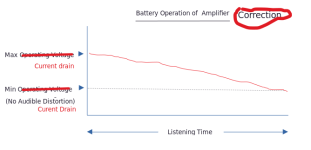Looks very portable. So the enclosure is sold locally? Maybe there is a shiny metal version as well. I was looking at a similar mp3 player with a slightly better display.
There are many people selling these assembled amplifiers.
The FM modules come in average and good quality versions, and a new version has come with a different shape and bigger buttons, same type display.
FM modules and ICs are imported, cheap versions have cheap capacitors, expensive ones get Keltron capacitors.
Resistor, PCB, pots. soldering etc. is done locally, mostly in Delhi area.
The (discontinued by Sanyo) 4440 IC has been copied by the Chinese, about 25 Rupees each, assembled and populated PCB is about 225 Indian Rupees. 0-12V AC supply, or 12V DC. 6W/channel in single, or 19W in BTL.
Mostly 2 IC BTL mode boards are sold.
2030 based boards also about same price, but needs 12-0-12V supply.
You can search on Indian sites, most are very cheap, the car radio was about 350 Indian, the AC powered one was 750 Indian Rupees.
Currently the US Dollar is about 83 Rupees.
The FM modules come in average and good quality versions, and a new version has come with a different shape and bigger buttons, same type display.
FM modules and ICs are imported, cheap versions have cheap capacitors, expensive ones get Keltron capacitors.
Resistor, PCB, pots. soldering etc. is done locally, mostly in Delhi area.
The (discontinued by Sanyo) 4440 IC has been copied by the Chinese, about 25 Rupees each, assembled and populated PCB is about 225 Indian Rupees. 0-12V AC supply, or 12V DC. 6W/channel in single, or 19W in BTL.
Mostly 2 IC BTL mode boards are sold.
2030 based boards also about same price, but needs 12-0-12V supply.
You can search on Indian sites, most are very cheap, the car radio was about 350 Indian, the AC powered one was 750 Indian Rupees.
Currently the US Dollar is about 83 Rupees.
Last edited:
If you want to include the power amp, you only real feasible choice is to go Class D, I use a Hypex 250 which from memory uses 35 VDC.
Cheers
Cheers
Can you hear the difference between class A, AB and D? Or, more to the point, do similarly priced amplifiers in each of the classes sound as good as each other? So far, I have not liked the sound of class D, however a well designed one should be able to impress. Waiting for my PAM 8403 board.
Hi, You can drive a Pass Class A amp from batteries. However you will need a hell of a lot more batteries & current. I once inquired on the Pass blog & Nelson said absolutely no problem.
Cheers
Cheers
Yes, I don't think the issue with the power available from the batteries.... I think the issue is to remove the AC component.
Remove the PS from the amp chassis, move it to a separate box. Feed an umbilical with DC to the amp chassis. So far, so good.
Then install a secondary capacitor banks in the amp chassis for additional filtering.
Get a big battery bank, go through a transformer and feed DC to the amp via an umbilical.
Put a switch at the amp to select between the AC power supply or the battery power supply.
Remove the PS from the amp chassis, move it to a separate box. Feed an umbilical with DC to the amp chassis. So far, so good.
Then install a secondary capacitor banks in the amp chassis for additional filtering.
Get a big battery bank, go through a transformer and feed DC to the amp via an umbilical.
Put a switch at the amp to select between the AC power supply or the battery power supply.
It should be possible to charge batteries for 20 hours, and use for 4 hours a day, so that is also an alternate scheme, a little more simple.
Current limiting a big battery bank can also be thought about, for safety's sake.
Current limiting a big battery bank can also be thought about, for safety's sake.
No, I have not compared amplifiers by class.
And you are deviating from this thread topic.
My point is that if there is no real problem with the quality of class D amplifiers available, might as well use those for DC powered systems since they use much less current.
Also speaker impedance, as I have just found out, running off a battery is fine if I hook up two 8 Ohm speakers in series but not with two 4 Ohm speakers in series, which is curious since the LM 386 gives a minimum impedance of 4 Ohms as a specification, although in some forums using a 4 Ohm speaker with this amp has been advised against.
I am running my LM386 off batteries - I noticed that the 9V battery is not rather depleted and cannot power the amplifier without distortion at even low volume levels. The voltage reading, however, is about 6V. Connecting 3 AAA batteries which have a maximum of 4.5 V, I can run louder without so much distortion.
It is not the voltage reading that is important, then, but the rate of discharge (as mentioned by a member) that is important here.
I changed my diagram: Is this correct?

It is not the voltage reading that is important, then, but the rate of discharge (as mentioned by a member) that is important here.
I changed my diagram: Is this correct?
Attachments
- Home
- Amplifiers
- Power Supplies
- Battery Power Our Systems?

